A vertical rod is hit at one end. What kind of wave propagates in the rod if (a) the hit is made vertically (b) the hit is made horizontally ?
To solve the question about the type of wave that propagates in a vertical rod when it is hit at one end, we will analyze the two scenarios provided: when the hit is made vertically and when it is made horizontally.
1. Understanding the Setup:
- We have a vertical rod, which is a solid object that can transmit waves.
- The rod can vibrate in different modes depending on how it is struck.
2. Case (a): Hit Made Vertically:
- When the rod is hit vertically, the force applied is in the same direction as the length of the rod.
- This creates compressions and rarefactions along the length of the rod.
- Therefore, the type of wave that propagates in the rod is a longitudinal wave.
3. Case (b): Hit Made Horizontally:
- When the rod is hit horizontally, the force applied is perpendicular to the length of the rod.
- This causes the particles of the rod to move up and down or side to side, creating a disturbance that moves perpendicular to the direction of the wave.
- Hence, the type of wave that propagates in the rod is a transverse wave.
Final Answers:
- (a) When the hit is made vertically, a longitudinal wave propagates in the rod.
- (b) When the hit is made horizontally, a transverse wave propagates in the rod.
- We have a vertical rod, which is a solid object that can transmit waves.
- The rod can vibrate in different modes depending on how it is struck.
- When the rod is hit vertically, the force applied is in the same direction as the length of the rod.
- This creates compressions and rarefactions along the length of the rod.
- Therefore, the type of wave that propagates in the rod is a longitudinal wave.
- When the rod is hit horizontally, the force applied is perpendicular to the length of the rod.
- This causes the particles of the rod to move up and down or side to side, creating a disturbance that moves perpendicular to the direction of the wave.
- Hence, the type of wave that propagates in the rod is a transverse wave.
- (a) When the hit is made vertically, a longitudinal wave propagates in the rod.
- (b) When the hit is made horizontally, a transverse wave propagates in the rod.
Topper's Solved these Questions
Similar Questions
A uniform rod of length L and mass M is pivoted freely at one end and placed in vertical position.
a. What is angular acceleration of the rod when it is at ann angle θ with the vertical?
b. What is the tangential linear acceleration of the free end when the rod is horizontal?
View SolutionA weightless rod of length 2l carries two equal masses 'm', one tied at lower end A and the other at the middle of the rod at B. The rod can rotate in vertical plane about a fixed horizontal axis passing thriugh C . The rod of is released from rest in horizontal possion. The speed of the mass B at the instant rod become vertical is:
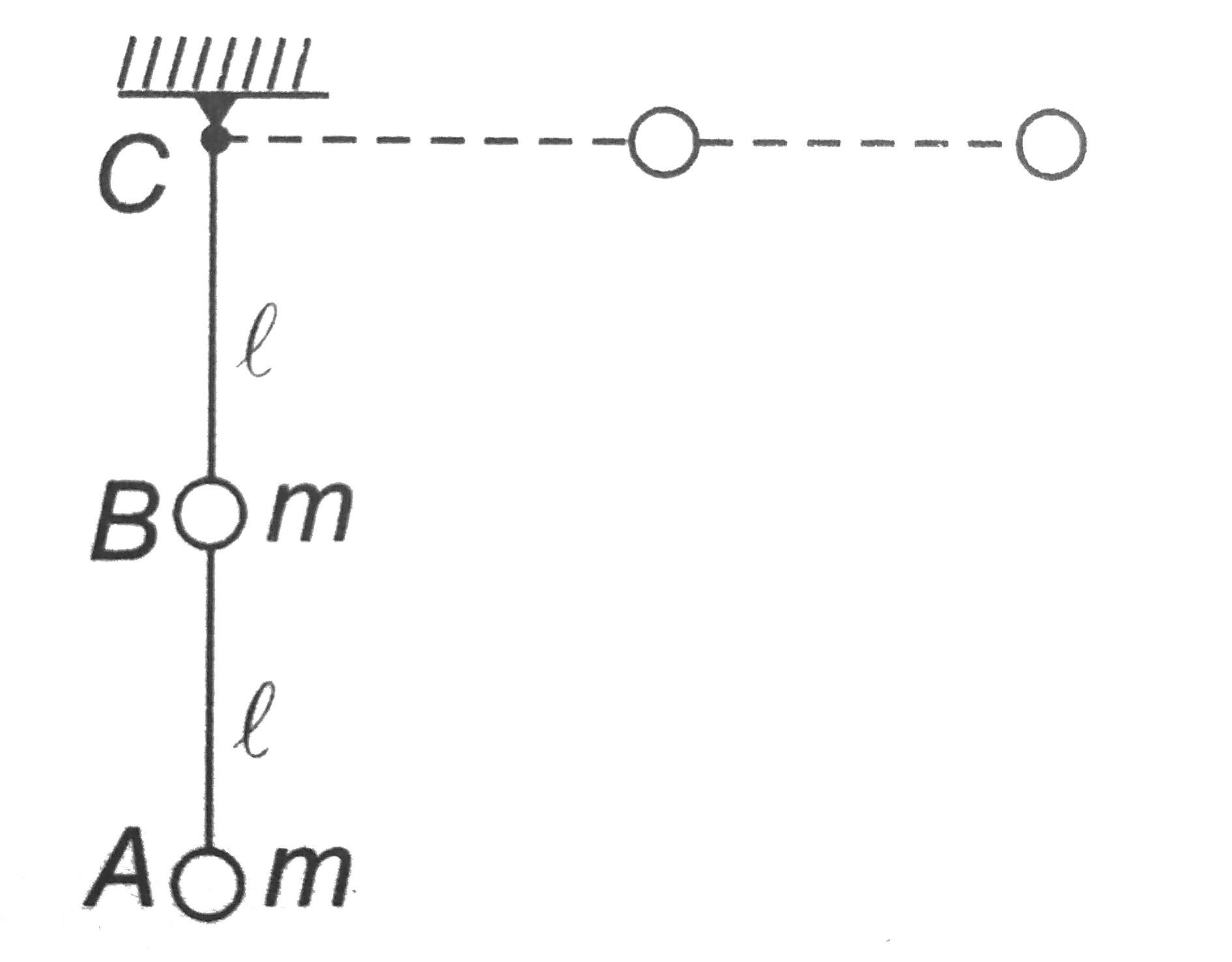
View SolutionA uniform rod of mass m and length l is fixed from Point A, which is at a distance l/4 from one end as shown in the figure. The rod is free to rotate in a vertical plane. The rod is released from the horizontal position.

What is the reaction at the hinge, when kinetic energy of the rod is maximum?
View SolutionA ball is thrown from a point O aiming a target at angle 30∘ with the horizontal so that the ball hits the target at B but the ball hits at point A, a vertical distance h below B. If the intial velocity of the ball is 20ms−1 and the horizontal distance between O and C is 10 m. Find the value of h.
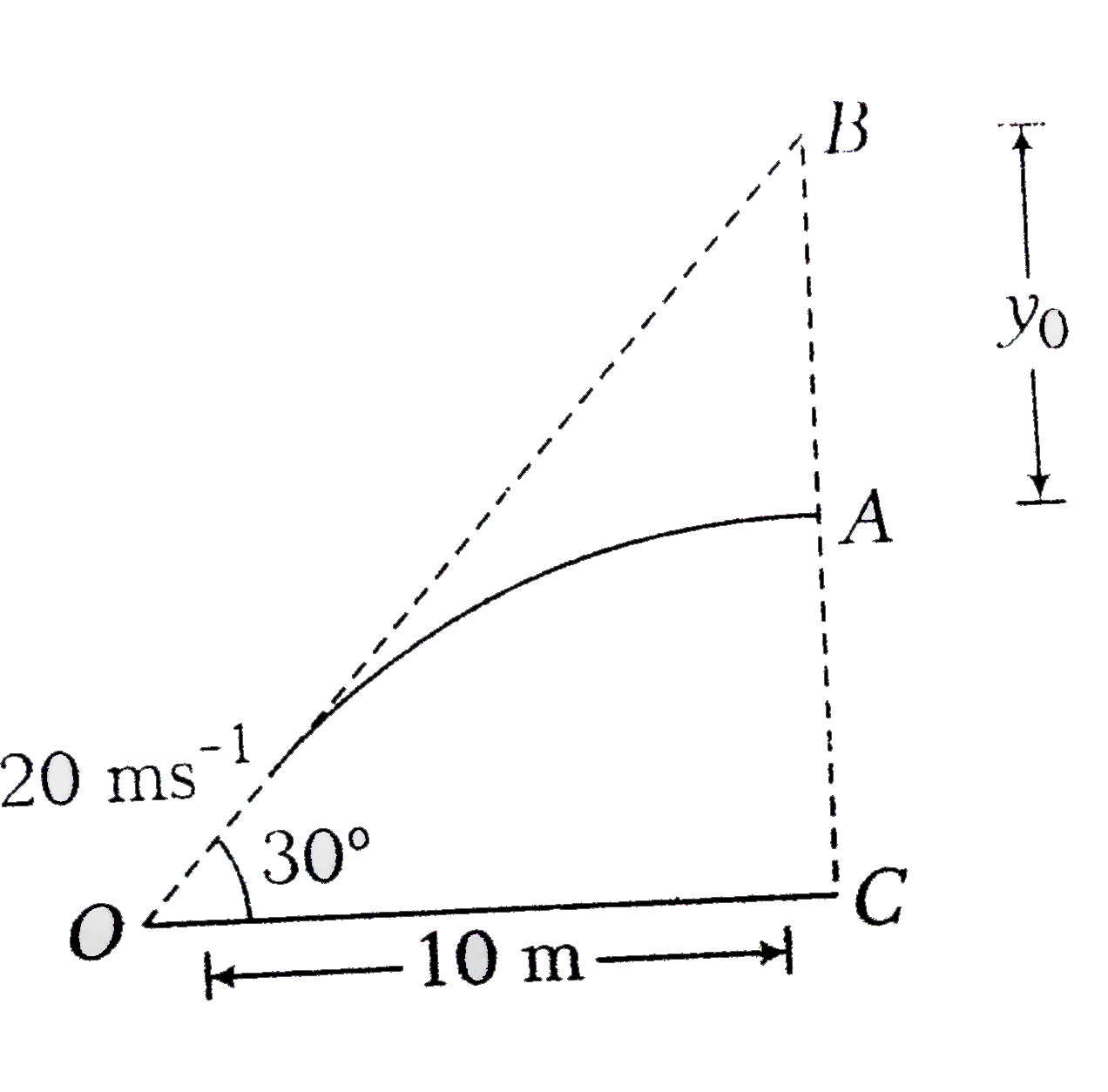
View SolutionA weightless rod of length l carries two equal masses m one fixed at the end and other in the middle ofhte rod. The rod can revolve in a vertical plane about A. Then, horizontal velocity which must be imparted to end C of rod to deflect it to horizontal position is
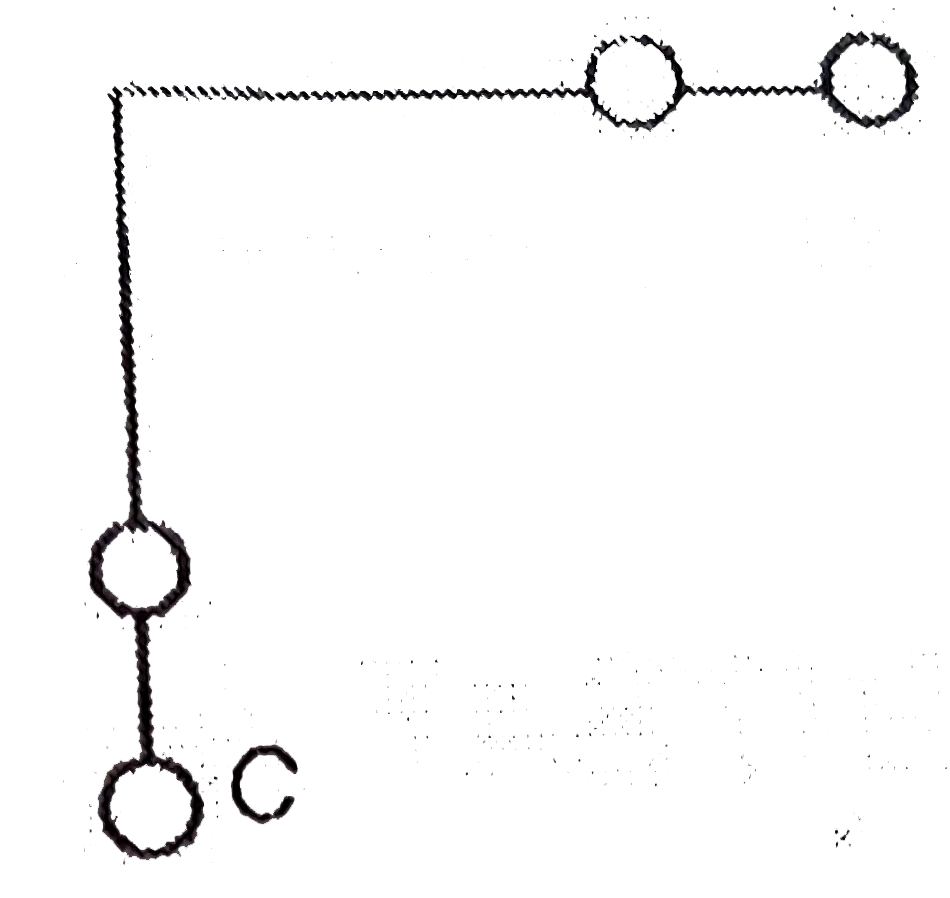
View SolutionA massless rod rigidly fixed at O. A sting carrying a mass m at one end is attached to point A on the rod so that OA=a. At another point B(OB=b) of the rod, a horizontal spring of force constant k is attached as shown. Find the period of small vertical oscillations of mass m around its euqilibrium position.
_E01_116_Q01.png)
View SolutionIn the figure a uniform rod of mass 'm' and length 'l' is hinged at one end and the other end is connected to a light vertical of spring constant 'k' as shown in figure. The spring has extension such that rod is equilibrium when it is horizontal . The rod rotate about horizontal axis passing through end 'B'. Neglecting friction at the hinge find (a) extension in the spring (b) the force on the rod due to hinge.
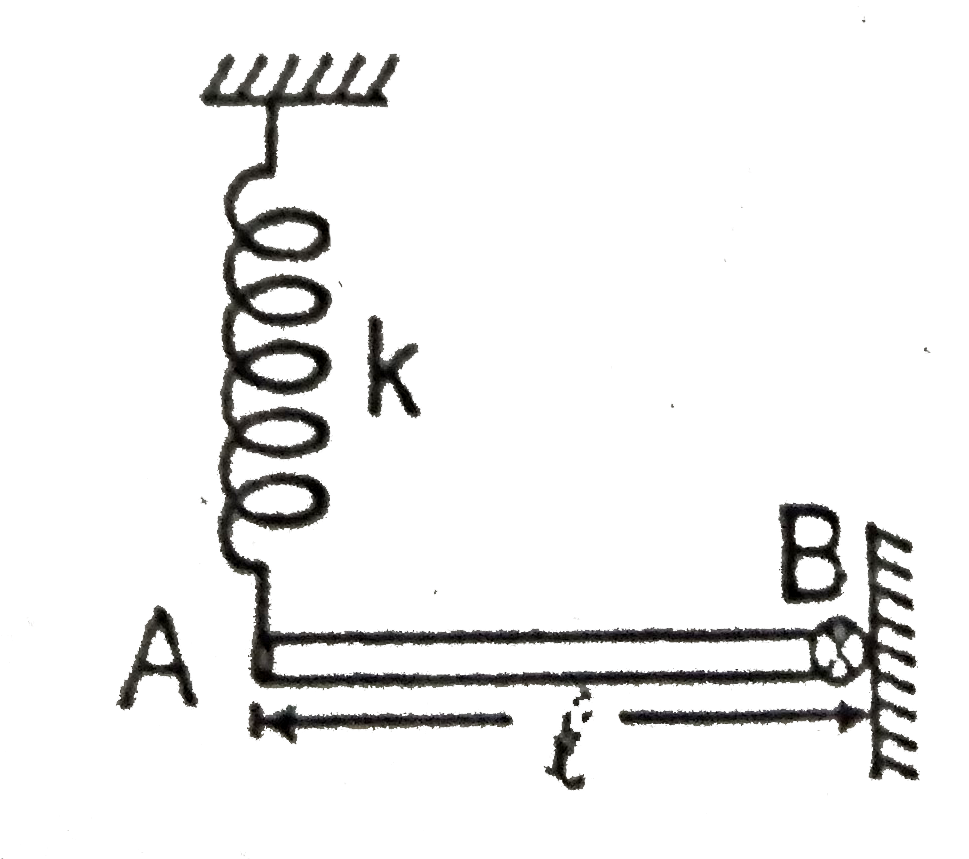
View SolutionA rod standing vertically on a table falls down. What will be the linear velocity of the middle point of the rod at the end of the fall, if the rod is 15 cm long? Assume sufficient friction for no slipping?
View SolutionA rod of mass m and length L is hinged at its top end. If the rod is in equilibrium making an angle of 30∘ with the vertical when a horizontal force F is applied as shown in figure, then the value of F is:
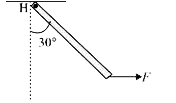
View SolutionA thin rod of length L and mass M is held vertically with one end on the floor and is allowed to fall. Find the velocity of the other end when it hits the floor, assuming that the end on the floor does not slip?
View Solution
